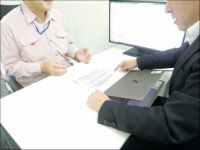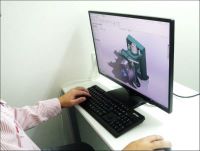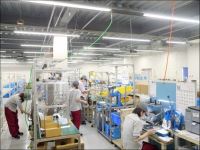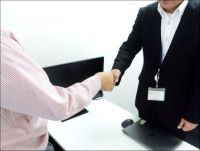CUSTOM PRODUCTS
Custom Products Tailored to Your Needs
Custom Products Tailored to Your Needs
We listen to your challenges, design and manufacture optimal products, and deliver high-quality solutions.
Custom Products Introduction Process
STEP1:
Hearing and Requirement Definition

We listen carefully to your needs, including specifications and applications, and define specific requirements.
STEP2:
Concept Design

Based on our technical expertise,
our development team designs the product.
STEP3:
Prototype Production

We evaluate the performance of the prototype in our facilities and have
it verified in your application.
STEP4:
Detailed Design

Based on the evaluation results of
the prototype, we adjust and redesign specifications to maximize performance in your application.
STEP5:
Production

We procure materials and carry out assembly and quality inspection in our factory to achieve QCD (Quality, Cost, Delivery) that satisfies our customers.
STEP6:
Introduction

We conclude the trade contract and start providing the products.
Case Study: Precision Regulator
Case Study: Precision Regulator
●Customer Request
We need a regulator with excellent pressure characteristics within the required application range.
●Design Requirements (Specification Requirements)
- Supply Pressure: We want to keep pressure fluctuations within ±0.5kPaG at 0.25-0.5MPa.
- Flow Characteristics: We want to keep pressure fluctuations within ±0.5kPaG at a maximum flow rate of 100L/min(ANR).
- Pressure Reproducibility: We want to keep pressure within ±0.5kPaG even when the supply pressure is turned On/Off.
(Note: As a trade-off characteristic, relief flow/sensitivity is not required.)
●Customization Details
Customizing some parts of the standard model R42-201-20T0

●Characteristic Comparison (Pressure Characteristics)

Case Study: System Equipment
Case Study: System Equipment
●Customer Request
We want to reduce the installation space for gas control equipment.
● Design Requirements (Specification Requirements)
- The characteristics of each element cannot be changed.
- The pressure supply port and mounting position on the equipment must remain unchanged.
●Customization Details
- Blockification of Flow Path
Effect: Downsizing of equipment for space-saving installation. Simplified piping design.
- Reduction of Number of Parts (Fittings: 11→4, Piping: 6→0)
Effect: Reduction of parts management costs. Shortening assembly work time. Reduction of quality risks such as gas leakage.
